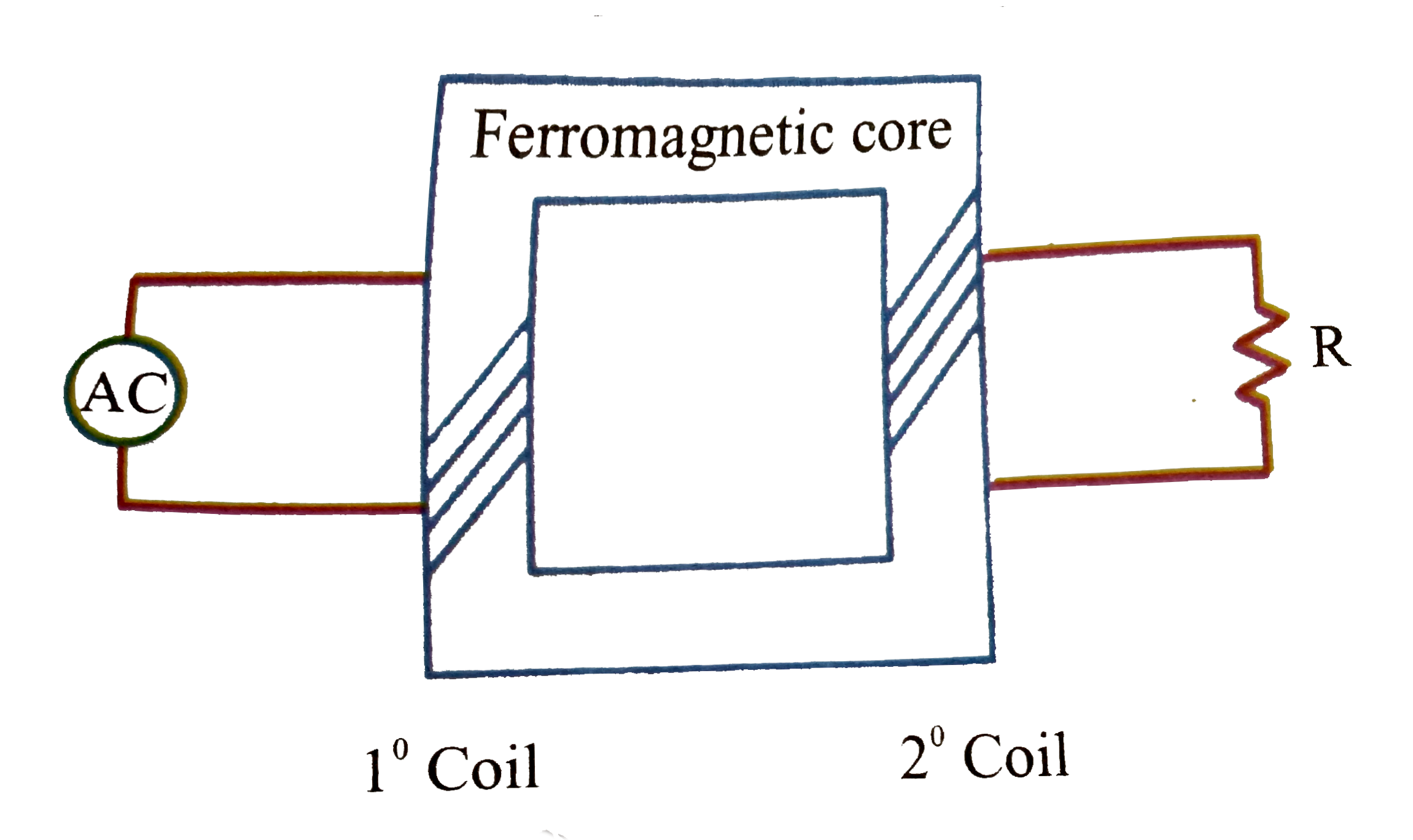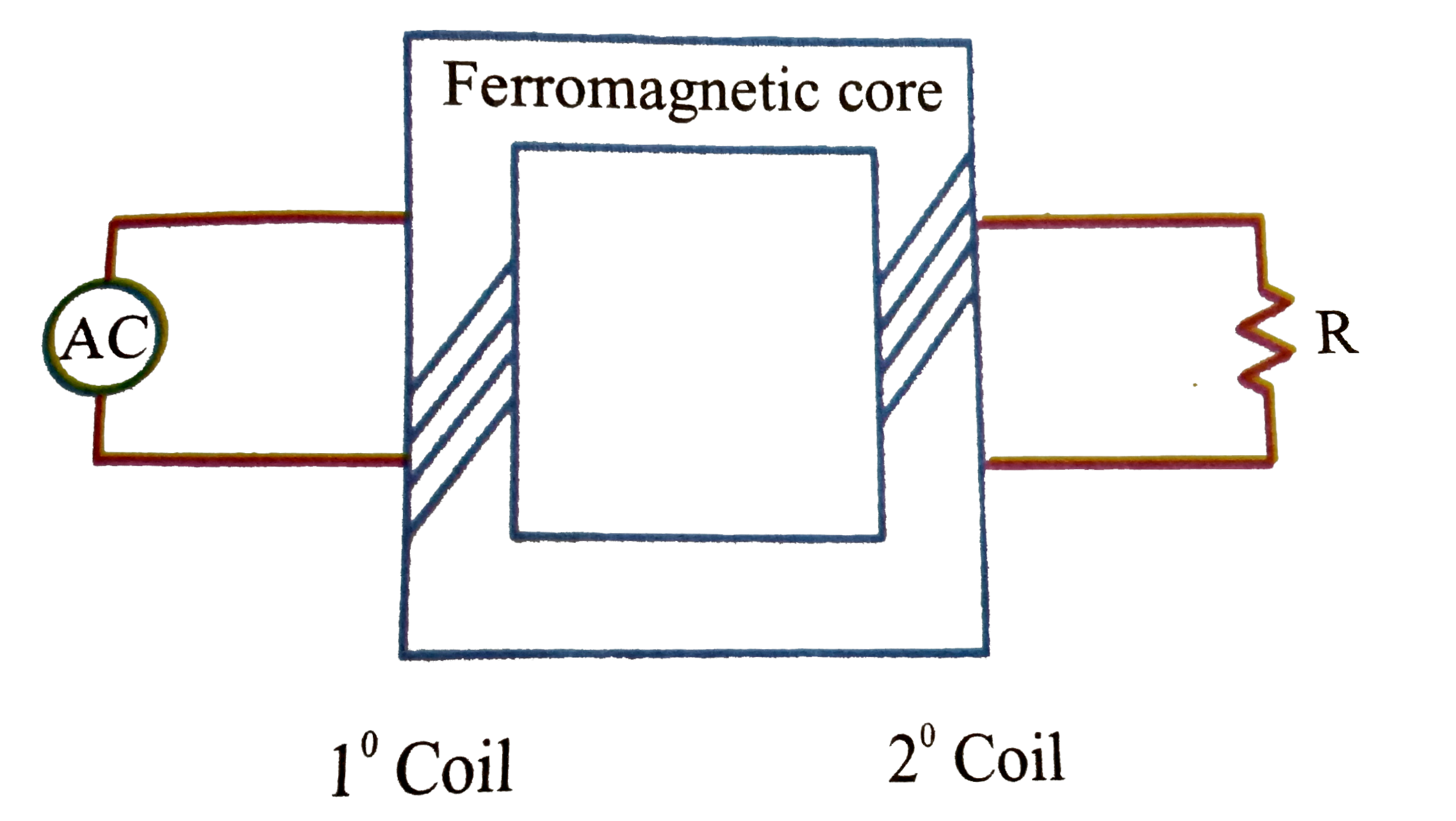The coils, in certain galvanometers, have a fixed core made of a non-magnetic metallic material. Why does the oscillating coil come to rest so quickly in such a core?
To understand why the oscillating coil in a galvanometer with a fixed core made of non-magnetic metallic material comes to rest quickly, we can break down the explanation into a series of steps:
1. Understanding the Galvanometer: A galvanometer is an instrument used to detect and measure small electric currents. It consists of a coil of wire that can rotate in a magnetic field.
2. Coil Oscillation: When an electric current passes through the coil, it generates a magnetic field which interacts with the magnetic field of the galvanometer, causing the coil to oscillate.
3. Role of Eddy Currents: As the coil oscillates, it moves through the magnetic field. According to Faraday's law of electromagnetic induction, a changing magnetic field induces an electromotive force (EMF) in the coil.
4. Lenz's Law: Lenz's law states that the direction of induced currents (eddy currents) will be such that they oppose the change that created them. Therefore, the eddy currents generated in the non-magnetic metallic core will flow in a direction that opposes the motion of the oscillating coil.
5. Damping of Oscillations: The opposing force from the eddy currents acts against the motion of the coil, causing it to lose energy. This energy loss results in a damping effect, which means that the oscillations of the coil decrease in amplitude over time.
6. Quick Resting of the Coil: Due to the continuous opposition from the eddy currents, the oscillating coil slows down rapidly and comes to rest quickly. The energy that would have sustained the oscillations is dissipated as heat due to the resistance in the material of the core.
Conclusion:
The oscillating coil in a galvanometer with a non-magnetic metallic core comes to rest quickly because the eddy currents induced in the core oppose the motion of the coil, leading to rapid energy dissipation and damping of oscillations.
---
The oscillating coil in a galvanometer with a non-magnetic metallic core comes to rest quickly because the eddy currents induced in the core oppose the motion of the coil, leading to rapid energy dissipation and damping of oscillations.
Topper's Solved these Questions
- BOOK - PRADEEPCHAPTER - MAGNETIC EFFECT OF CURRENT AND MAGNETISMEXERCISE - Conceptual Problems (d)2videos
MAGNETIC EFFECT OF CURRENT AND MAGNETISM
- BOOK - PRADEEPCHAPTER - MAGNETIC EFFECT OF CURRENT AND MAGNETISMEXERCISE - Very Short Answer Questions (a)2videos
MAGNETIC EFFECT OF CURRENT AND MAGNETISM
- BOOK - PRADEEPCHAPTER - ELECTROSTATICSEXERCISE - ASSERTION-REASON TYPE QUESTIONS2videos
ELECTROSTATICS
- BOOK - PRADEEPCHAPTER - OPTICSEXERCISE - Multiple choice questions1videos
OPTICS
Similar Questions
Knowledge Check
- Question 1 - Select One
Statement -1 : The sensitvity of a moving coil galvanometer is increased by placing a suitable magnetic material as a core inside the coil.
Statement - 2: Soft iron has a high magnetic permeability and cannot be easily magnetized or demagnetized.AStatement -1 is True, statement -2 is True , statement -2 is a correct explanation for statement -1.BStatement -1 is True, statement -2 is True , statement -2 is not a correct explanation for statement -1.CStatement -1 is True, statement -2 is FalseDStatement -1 is False, statement -2 is True - Question 2 - Select One
A physics lab is designed to study the transfer of electrial energy from one circuit to another by means of a magnetic field using simple transformers. Each transformer has two coils of wire electrically insulated from each other but wound a round a common core of ferromagnetic material. The two wires are close together but do not touch each other
The primary (1∘) coil is connected to a source of alternating (AC) current. The secondary (2∘) coil is connected to resistor such as a light bulb. The AC source produces on oscillating voltage and current in the primary coil that produces an oscillating megnetic field in the core. material. This in turn induces an oscillating voltage and AC curent in the secondary coil
Students collected the following data comparing the number of turns per coil (N), the voltage (V) and the current (I) in the coils of three transformers.
∣∣ ∣ ∣ ∣∣Transformerprimary coilSecondary coil1100.10V.10A200.20V.5A2100.10V.10A50.5V.5A3100.10V.10A100.5V.20A∣∣ ∣ ∣ ∣∣

A trasnsformer with 40 turns in its primary coil is connected to a 120VAC source. If 20W of power if supplied to the primary coil, how much power is developed in the secondary coil ?A10WB20WC80WD160W - Question 3 - Select One
A physics lab is designed to study the transfer of electrial energy from one circuit to another by means of a magnetic field using simple transformers. Each transformer has two coils of wire electrically insulated from each other but wound a round a common core of ferromagnetic material. The two wires are close together but do not touch each other
The primary (1∘) coil is connected to a source of alternating (AC) current. The secondary (2∘) coil is connected to resistor such as a light bulb. The AC source produces on oscillating voltage and current in the primary coil that produces an oscillating megnetic field in the core. material. This in turn induces an oscillating voltage and AC curent in the secondary coil
Students collected the following data comparing the number of turns per coil (N), the voltage (V) and the current (I) in the coils of three transformers.
∣∣ ∣ ∣ ∣∣Transformerprimary coilSecondary coil1100.10V.10A200.20V.5A2100.10V.10A50.5V.5A3100.10V.10A100.5V.20A∣∣ ∣ ∣ ∣∣

The primary coil of a transformer has 100 tunrs and is connected to a 120VAC source. How many turns are in the secondary coil if there is 2400V across itA5B50C200D2000
The core of a transformer is made of magnetic material of high permeanbility. Why ?
View SolutionWhat would be the energy of the magnetic field of the coil of the previous problem, if its core were of a nonferromagnetic material? What is the source of oxcess energy in the case of a ferromagnetic core?
View SolutionThe core of a transformer is made of a material having norrow hysterisis loop. Why ?
View SolutionA physics lab is designed to study the transfer of electrial energy from one circuit to another by means of a magnetic field using simple transformers. Each transformer has two coils of wire electrically insulated from each other but wound a round a common core of ferromagnetic material. The two wires are close together but do not touch each other
The primary (1∘) coil is connected to a source of alternating (AC) current. The secondary (2∘) coil is connected to resistor such as a light bulb. The AC source produces on oscillating voltage and current in the primary coil that produces an oscillating megnetic field in the core. material. This in turn induces an oscillating voltage and AC curent in the secondary coil
Students collected the following data comparing the number of turns per coil (N), the voltage (V) and the current (I) in the coils of three transformers.
∣∣ ∣ ∣ ∣∣Transformerprimary coilSecondary coil1100.10V.10A200.20V.5A2100.10V.10A50.5V.5A3100.10V.10A100.5V.20A∣∣ ∣ ∣ ∣∣

Which of the following is a correct expression for R, the resistance of the load connected to the secondary coilView SolutionThe coils made of same material in two moving coil galvanometer have their area in the ratio of 2:3 and number of turns in the ratio 4:5 . These two coils carry the same current and are situated in the same field. The deflections produced by these two coils willl be in the ratio of
View Solution

